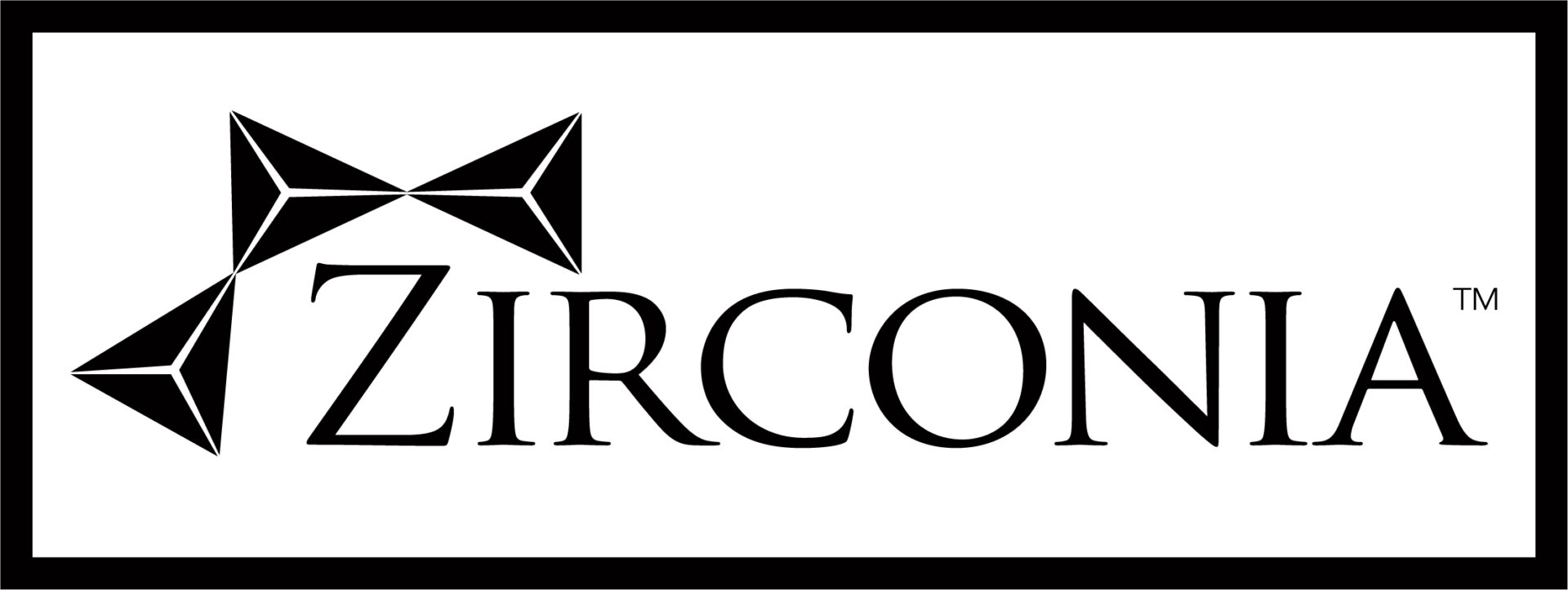Ending the Corrosion Cycle
Ceramic Surface Treatments (CST)
"Build - Corrode - Demolish - Repeat" the Concrete Corrosion Cycle is a financial and ecological disaster, which bankrupts municipalities, and creates massive carbon emissions.
Concrete is highly porous and chemically susceptible to corrosion. Corrosion takes place quickly at the surface, mainly due to carbonation, salts, and freeze-thaw effects. Also, porosity and internal capillary void space allow penetration of contaminants, which eat away at the cement binder and steel rebar reinforcement from within.
Surface treatment with CeramycGuard can stop the corrosion cycle. This Ceramic Surface Treatment disallows ingress of contaminants and protects the surface of concrete from chemical and physical attack. Zirconia's products are ideal for new and existing concrete, able to restore, repair, and durably protect concrete assets. Ceramic Surface Treatments will not delaminate and are immune to common causes of corrosion and degradation, including: salts, carbonation, UV, moisture, and thermal cycling (freeze-thaw). They seal the pores and capillaries eliminating these routs of contaminant ingress.
CeramycGuard Ceramic Surface Treatment is a brush and roll application which heals and seals concrete, transforming the surface into a chemically bonded geopolymer (alumina-silicate polymer) composite.
Concrete (porous) vs CeramycGuard™ (non-porous)
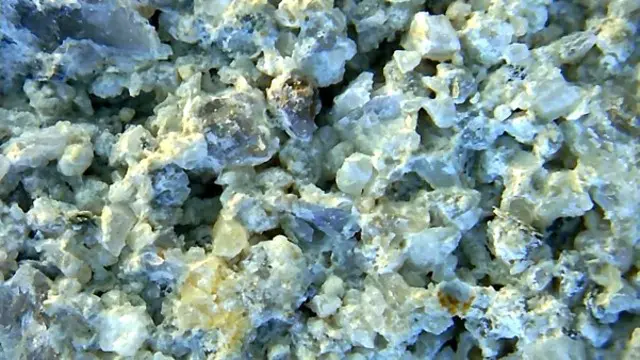
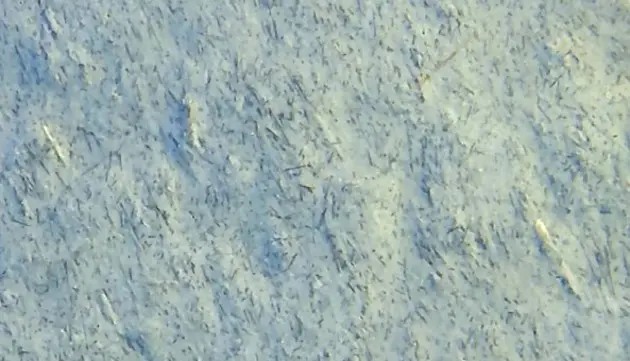
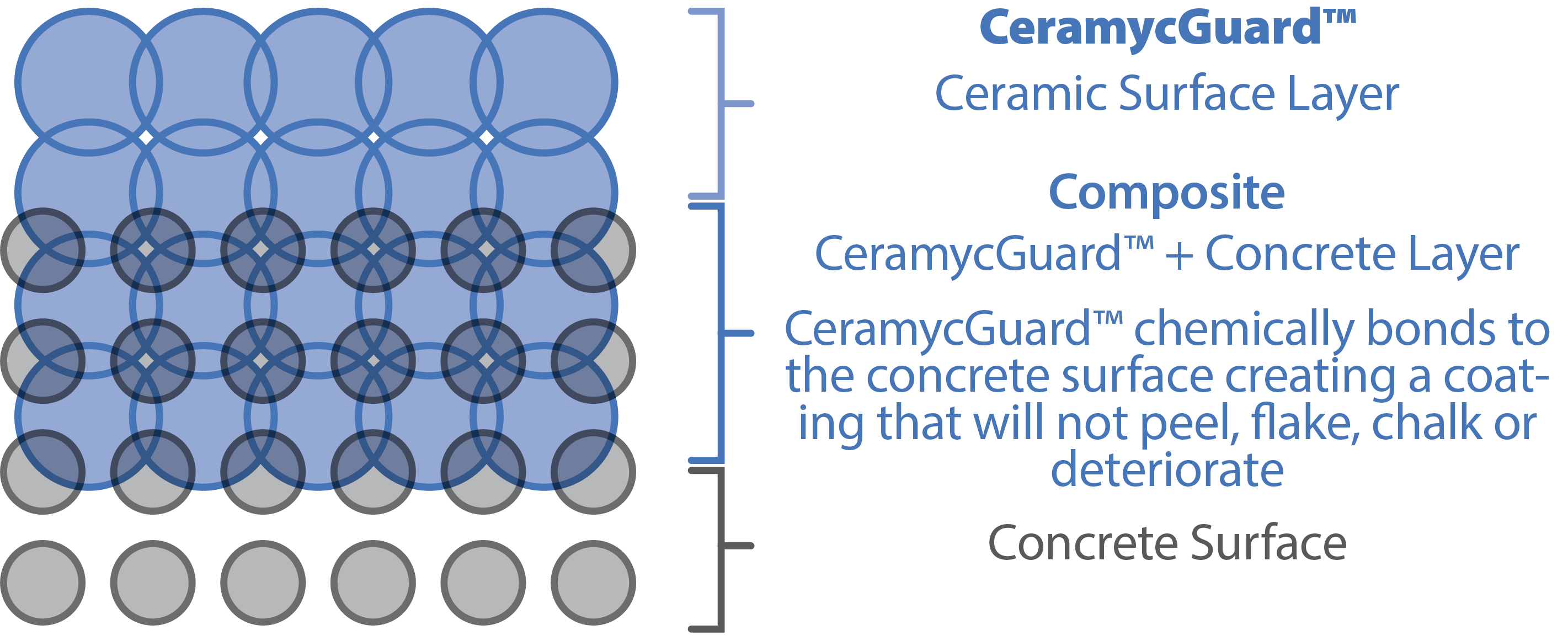
Roman Cement Reborn
Geopolymers Stand The Test of Time
Geopolymer technology was first used by the ancient Egyptians circa 2,600 BC, and later adopted and improved by the Romans. Basically, geopolymer cement is an analogue of granite, or man-made stone. The use of geopolymer cements allowed the Romans to construct aqueducts, temples, the Colosseum, and many other iconic structures still standing today. While earthquakes and pilfering have reduced some these wonders from their original state, they have stood strong against weathering and environmental attack, which so quickly decay modern hydrating cements. While these monuments to the past provide insight into culture and times long gone, they also provide the ultimate testament to the long-term durability of geopolymer technology, and the potential for preserving our global infrastructure.
Geopolymers are alumina-silica ceramic polymers, which have the benefit of being durable and inert, while also being flexible. This special tetrahedral polymer spirals like a coiled spring, giving this unique structure the ability to expand and contract during temperature swings, without damage. During the curing process, the abundance of nano-scale reactive ceramic oxygen allows these polymer chains to bond with and incorporate other inorganic elements, such as metals, silica, and alkali, forming a dense composite. While cured ceramics normally require a significant energy input (kiln), Zirconia's use of nano- and micro- scale particles allows our Ceramic Surface Treatment geopolymer coating to cure with a very low energy of reaction - at room temperature (no kiln needed).
With one treatment, previously vulnerable hydrating cement becomes virtually immortal (chemically and physically stabilized), just like the Roman Cements we see still standing after thousands of years. Zirconia's geopolymer coating transfers its extreme longevity to the weaker hydrating concrete asset.
*We use the term Ceramic Surface Treatment to represent a new category of nano- and micro-scaled geopolymer coatings and related technologies.
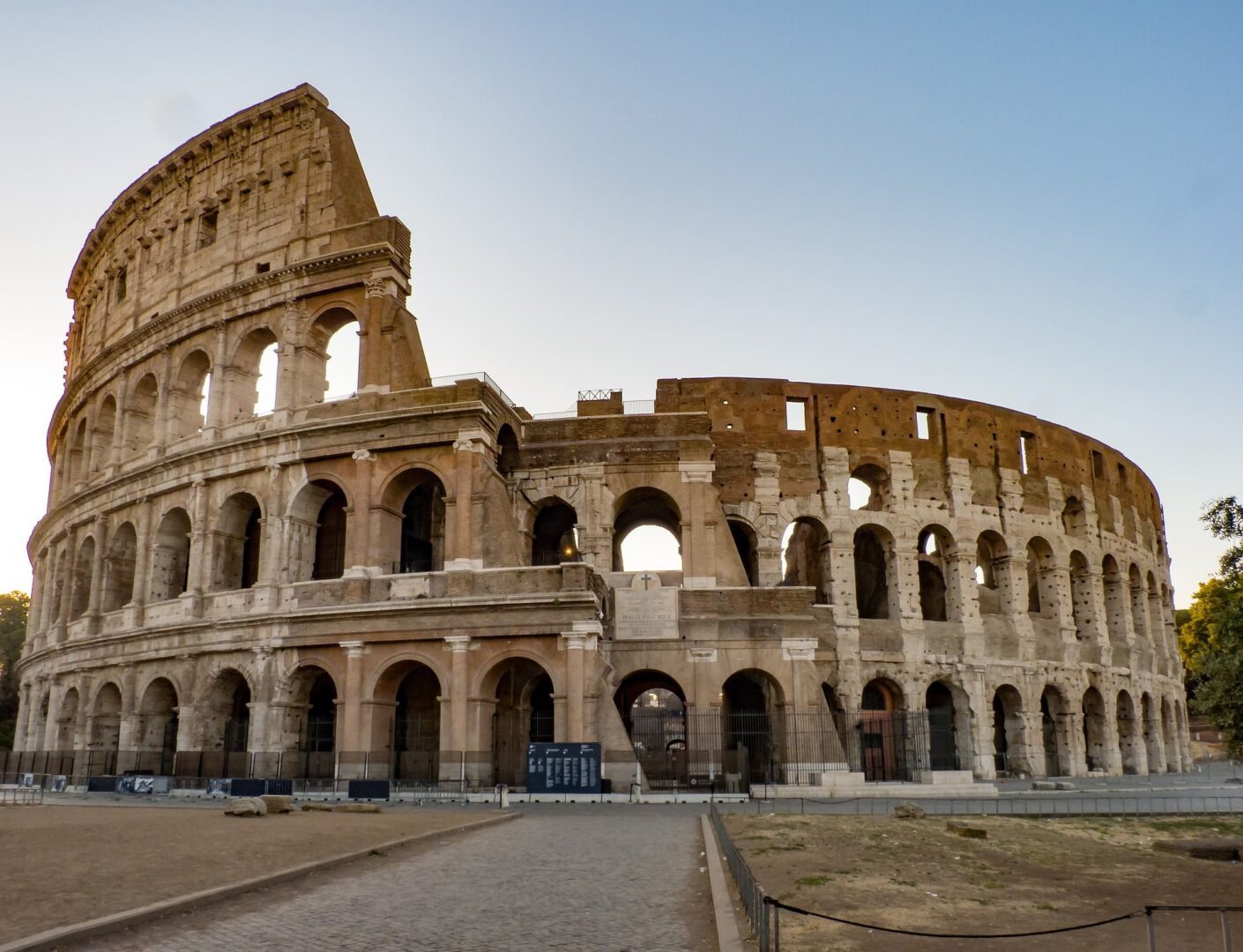
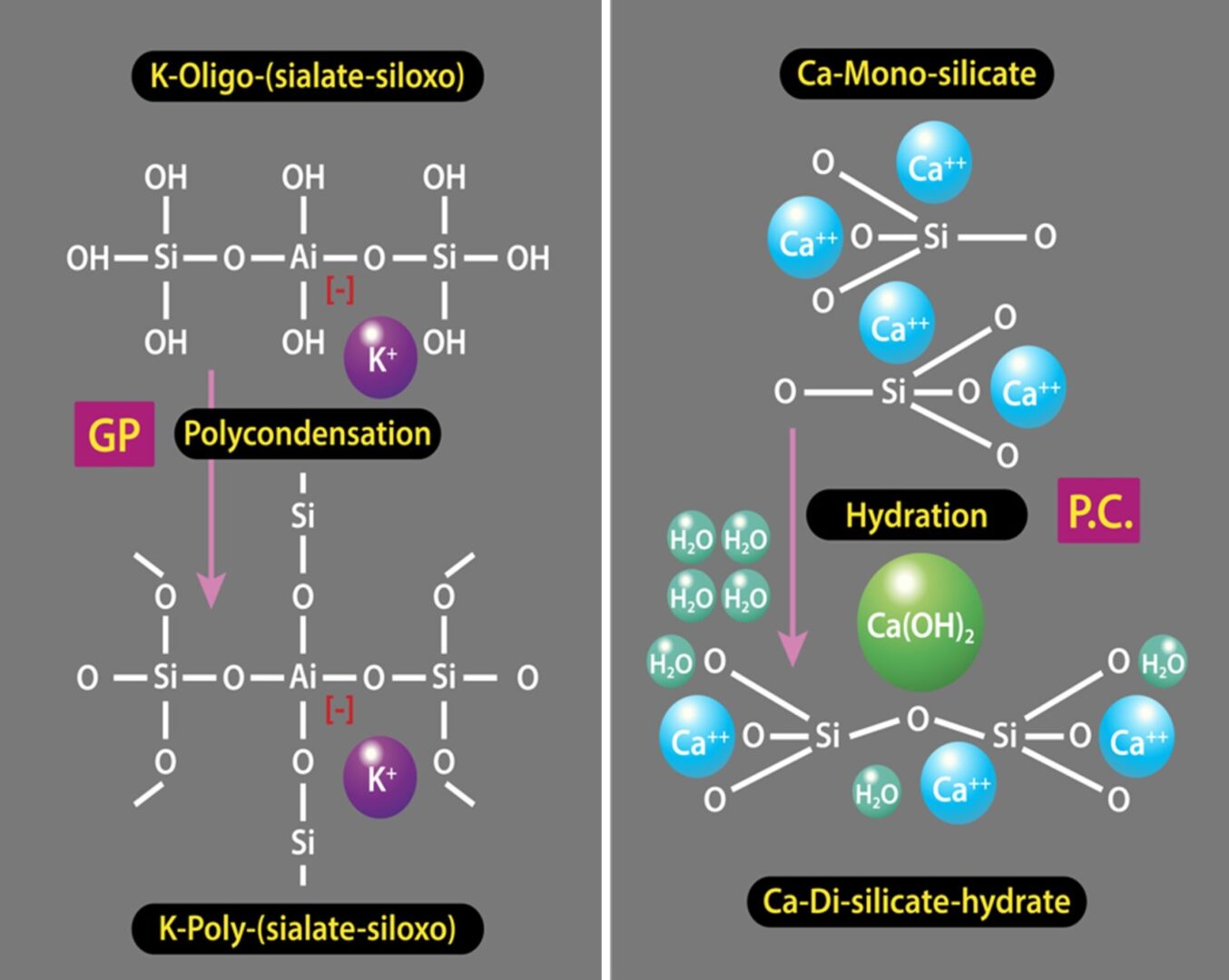
Geopolymer (GP) on left, Portland Cement (PC) on right. GP has an extremely durable covalently/ionically bonded structure, whereas PC has weaker chemical association from hydration.
